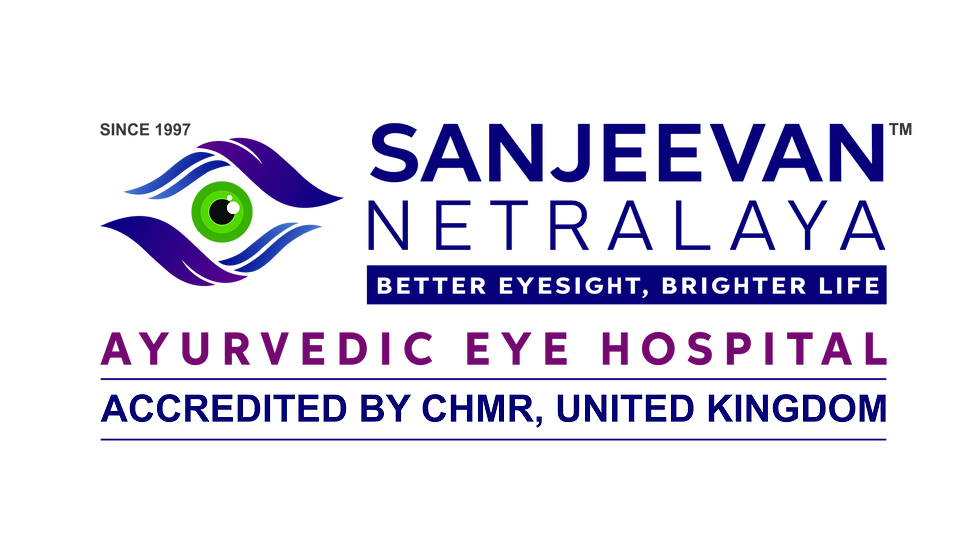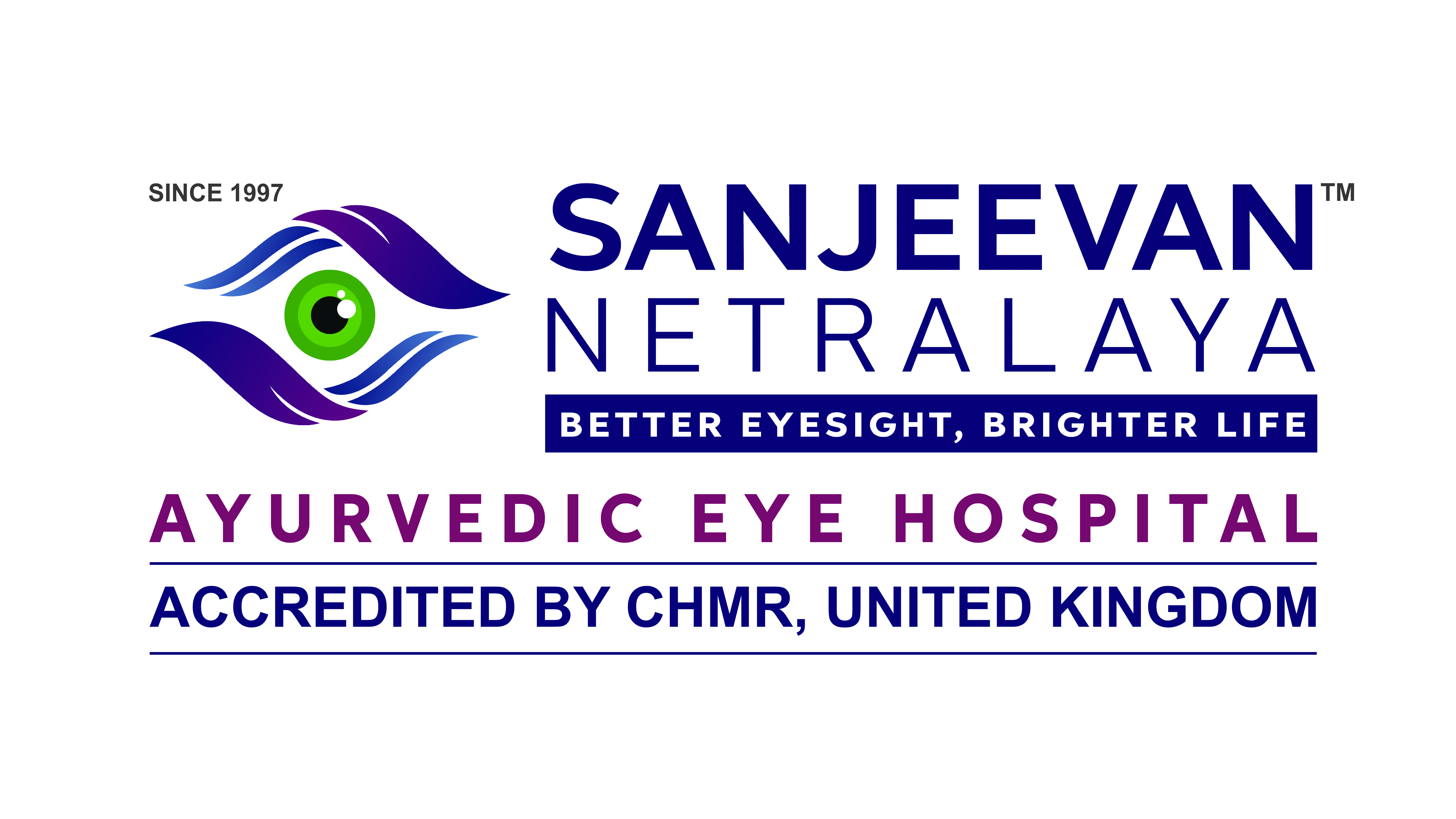
Branch Retinal Artery Occlusion (BRAO)

What is Branch Retinal Artery Occlusion
Branch retinal artery occlusion is a condition where the blood flow to a branch is blocked. This can cause vision loss or decreased in the affected eye. This can be caused by a clot (or embolus) that travels to a branch of the retinal artery. It blocks blood flow to a part of the retina. BRAO is a serious condition and requires immediate medical attention in order to prevent permanent vision loss.
Sanjeevan Netralaya's Advanced Ayurvedic Eye Care has successfully treated more than 6 lakh patients in India and treats Branch Retinal Artery Occlusion without causing side effects and discomfort. If you are experiencing symptoms of Branch Retinal Artery Occlusion please begin your treatment immediately. Book your appointment at your closest Sanjeevan Netralaya clinic today.
What are the causes of Branch Retinal Artery Occlusion
There are many factors that can cause branch retinal artery occlusions (BRAO). The most common causes are:
1. Atherosclerosis is a buildup of plaque in blood vessels that can lead to blood clots in the retinal blood vessel.
2. Cardiac Emboli is a form of blood clots in the heart that travel to the retinal artery and become stuck and prevent blood flow.
3. Hypercoagulable states are medical conditions that increase the risk of blood clots, such as factor V Leiden Deficit, antiphospholipid syndrome, and others.
4. Giant cell arteritis is an inflammation of blood vessels that can cause blockage of the retinal vessel.
5. Trauma: A clot can form in the retinal vessel artery from injury to the head or eye.
6. Vasculitis is an inflammation of blood vessels that can lead to narrowing or obstruction of the retinal vessel.
It is important to remember that BRAO can be caused by many different causes. An ophthalmologist, along with other specialists, will need to examine the patient thoroughly in order to determine the cause of the problem and offer appropriate treatment.
Sanjeevan netralaya's Advanced Ayurvedic Ear Care has helped over 6 Lakh patients across India. The treatment successfully treats Branch Retinal Artery Occlusion without any side effects or discomfort. Do not delay your treatment if you experience symptoms of Branch Retinal Artery Occlusion. Book your appointment at your closest Sanjeevan Netralaya clinic today.
How is Branch Retinal Artery Occlusion Treated?
Branch Retinal Artery Occlusion (BRAO), is a condition that depends on the underlying cause and severity of the symptoms.
1. Treatment may include anti-platelet drugs and anticoagulants to stop the formation of new clots or dissolve existing ones.
2. Corticosteroids may be used to treat giant cell arteritis. This reduces inflammation and protects the blood vessels from further damage.
3. Treatment may include immunosuppressive drugs to reduce inflammation or prevent further damage to blood vessels.
4. Laser therapy or surgery may be used to treat occlusions that are not caused by an identifiable cause.
5. Low vision rehabilitation might be an option for those with severe visual impairments.
To prevent permanent vision loss, it is important to know that treatment for BRAO must be started as soon as possible. For the best possible outcome, it is important to be referred promptly to an ophthalmologist who has expertise in retinal vein diseases.
Sanjeevan's Advanced Ayurvedic Vision Care has been used to treat more than 6 lakh patients across India. It successfully treats Branch Retinal Artery Occlusion without creating any discomfort or side effects. Do not delay your treatment if you experience any symptoms. Book your appointment at your closest Sanjeevan Netralaya clinic today.
How is Branch Retinal Artery Occlusion Diagnosed?
Branch Retinal Artery Occlusion is usually diagnosed by a combination eye exam and imaging tests. BRAO can be detected using the following diagnostic tests:
1. Ophthalmoscopy is an examination of the eye with a special instrument called an "ophthalmoscope". This allows the doctor to view the blood vessels within the retina.
2. Fluorescein angiography is a test that injects a special dye into a vein. Photographs of the retina are taken to identify blockages in blood vessels.
3. Optic coherence tomography: This non-invasive imaging technique uses light waves to produce detailed cross-sectional images.
4. Ultrasonography of your eye: This is a test that uses sound waves and creates images of your eye, including blood vessels.
5. Doppler ultrasound: This is a test that uses sound waves in order to determine the direction and speed of blood flow within the retinal vessels.
6. Magnetic Resonance Angiography, (MRA), or Computed Tomography Angiography(CTA) are imaging tests that show blood vessels in the brain and eyes more clearly.
Sometimes, additional tests are required to diagnose the underlying cause of BRAO. These tests include blood tests to rule out blood clotting disorders and tests to assess the heart and blood vessels.
It is important to remember that BRAO can be a serious condition and requires immediate medical attention in order to prevent permanent vision loss. For the best possible outcome, it is important to get a prompt referral to an eye doctor who is experienced in retinal vascular disease.
Sanjeevan Netralaya's Advanced Ayurvedic Eye Care has successfully treated more than 6 lakh patients in India and treats Branch Retinal Artery Occlusion without causing side effects and discomfort. If you are experiencing symptoms of Branch Retinal Artery Occlusion please begin your treatment immediately. Book your appointment at your closest Sanjeevan Netralaya clinic today.
Sanjeevan Netralaya’s Advanced Ayurvedic Eye Care Treatment has successfully treated Branch Retinal Artery Occlusion in India. There have been over 6 lakh patients who have received effective retina care from Sanjeevan Netralaya without any side effects. Book your appointment at your closest Sanjeevan Netralaya clinic today.
Can Branch Retinal Artery Occlusion be cured?
Branch Retinal Artery Occlusion is a serious condition that can cause vision loss and blindness. Treatment success depends on the root cause, severity, promptness, diagnosis, and treatment.
Sometimes, vision loss due to BRAO can be reversed if there is a clot, embolus, or a condition that can dissolve with medication or surgically removed. Early treatment is important in these cases to prevent further damage to blood vessels and to restore blood flow to the affected areas, which can potentially improve or restore vision.
In cases where there has been permanent damage to blood vessels, vision loss can be irreversible. These cases may require treatment to prevent further damage and preserve vision. Low vision rehabilitation can also be used to help the patient adjust to their visual impairment.
It is important to remember that BRAO can be a serious condition and requires immediate medical attention in order to prevent permanent vision loss. For the best possible outcome, it is important to get a prompt referral to an eye doctor who is experienced in retinal vascular disease.
Sanjeevan Netralaya's Advanced Ayurvedic Eye Care has successfully treated more than 6 lakh patients in India and treats Branch Retinal Artery Occlusion without causing side effects and discomfort. If you are experiencing symptoms of Branch Retinal Artery Occlusion please begin your treatment immediately. Book your appointment at your closest Sanjeevan Netralaya clinic today.
Symptoms of Branch Retinal Artery Occlusion
Branch Retinal Artery Occlusion symptoms (BRAO) may vary depending on where and how severe the occlusion is. The most common symptoms are:
1. Sudden, unremarkable loss of vision: This is most common symptom in BRAO. It can be mild to severe.
2. Visual field defects: This is a condition that causes vision loss in a small area of the visual field. It is called scotoma.
3. Blurred vision can be caused by an occlusion of a small branch in the retinal artery.
4. Color vision may change: Because the retina is not receiving enough blood, the affected area may appear grayish or white.
5. Redness in the eye may be caused by inflammation of blood vessels.
6. Headaches: Occlusion can cause headaches in some people.
7. Systemic symptoms: Other conditions, such as giant cell arthritis, can cause systemic symptoms like fever, malaise and jaw claudication.
Sanjeevan Netralaya's Advanced Ayurvedic Eye Care has effectively treated over 6 lakh patients across India and successfully treats Branch Retinal Artery Occlusion without causing any harmful side effects or discomfort. Do if you have any symptoms of Branch Retinal Artery Occlusion, do not prolong your treatment. Book your appointment at your closest Sanjeevan Netralaya clinic today.

